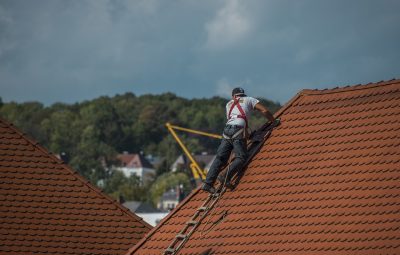Let’s face it—roofs take a beating. Rain, wind, hail, and even that relentless summer sun can turn small issues into expensive nightmares. And in 2025, with climate extremes becoming the norm, roofing problems aren’t getting any simpler. But here’s the deal: catching issues early and knowing how to fix them can save you thousands. Let’s dive in.
1. Leaks and Water Damage
Leaks are the sneakiest of roofing problems. They start small—maybe a damp spot in the attic or a faint water stain on the ceiling—but left unchecked, they’ll ruin insulation, warp wood, and even encourage mold. In 2025, with heavier rainfall in many regions, leaks are a top concern.
How to Fix It:
- Locate the source: Check around chimneys, vents, and skylights first—these are common weak points.
- Patch small holes: Use roofing cement or a waterproof sealant for minor gaps.
- Replace damaged shingles: If the leak is due to cracked or missing shingles, swap them out ASAP.
- Call a pro for major leaks: If the damage is extensive (think sagging ceilings or soaked insulation), don’t DIY—get a roofer.
2. Shingle Damage (Curling, Cracking, or Missing)
Shingles are your roof’s armor. But over time—or after a nasty storm—they curl, crack, or go missing entirely. In 2025, newer “smart” shingles with solar-reflective coatings are gaining traction, but traditional asphalt shingles still dominate. And they’re vulnerable.
How to Fix It:
- Replace individual shingles: Pry up the damaged one, slide in a new one, and nail it down. Easy if you’re comfortable on a ladder.
- Consider a full replacement: If more than 30% of your shingles are damaged, it’s time for a new roof.
- Upgrade to impact-resistant shingles: If you live in a hail-prone area, these can be worth the investment.
3. Poor Ventilation
Roofs need to breathe. Without proper ventilation, heat and moisture build up, leading to warped decks, higher energy bills, and even ice dams in winter. Honestly, this one’s often overlooked until it’s too late.
How to Fix It:
- Install ridge vents or soffit vents: These create a natural airflow, pulling cool air in and hot air out.
- Check existing vents: Make sure they’re not blocked by insulation or debris.
- Add an attic fan: If your roof still feels like an oven, a powered fan can help.
4. Flashing Failures
Flashing—those thin metal strips around chimneys, vents, and valleys—is your roof’s first line of defense against water. But over time, it can rust, loosen, or crack. And when it fails? You guessed it: leaks.
How to Fix It:
- Reseal with roofing cement: For minor gaps, a bead of cement can buy you time.
- Replace damaged flashing: If it’s bent or corroded, remove the old piece and install a new one.
- Upgrade to stainless steel or copper: These last longer than aluminum, especially in harsh climates.
5. Ice Dams
Ice dams are winter’s revenge. When snow melts and refreezes at the roof’s edge, it creates a dam that traps water—which then seeps under shingles. With wilder temperature swings in 2025, these are becoming a bigger headache.
How to Fix It:
- Rake snow off your roof: After heavy snowfall, use a roof rake to clear the lower 3-4 feet.
- Improve attic insulation: A well-insulated attic keeps heat from melting snow unevenly.
- Install heated cables: These can melt ice dams before they form, though they’re a bit of an energy hog.
6. Ponding Water
Flat or low-slope roofs are prone to ponding—water that pools and doesn’t drain. Over time, this weight stresses the roof and accelerates wear. In 2025, with more intense rainstorms, ponding is a growing issue.
How to Fix It:
- Clear drains and gutters: Debris is often the culprit.
- Add tapered insulation: This creates a slight slope to encourage drainage.
- Consider a roof coating: Elastomeric coatings can seal minor depressions.
7. Tree and Wildlife Damage
Branches scraping your roof? Squirrels nesting in your eaves? Yeah, nature’s cute until it’s costing you money. In 2025, urban wildlife is adapting—and roofs are prime real estate.
How to Fix It:
- Trim overhanging branches: Keep trees at least 6 feet away from your roof.
- Install critter guards: Mesh or metal barriers can deter raccoons and birds.
- Repair entry points: Seal gaps around vents and soffits with hardware cloth.
Final Thoughts
Roofing problems won’t wait for a convenient time to show up. But in 2025, with smarter materials and a bit of vigilance, you can stay ahead of the worst. Whether it’s a quick patch or a full replacement, the key is acting fast—before the sky literally falls in.








